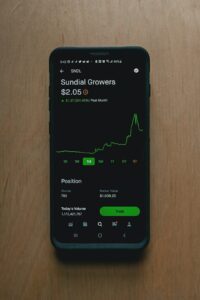Forex trading has become increasingly popular in recent years, thanks to its potential for high returns and the accessibility it offers to retail traders. However, with the fast-paced nature of the forex market, it can be challenging for traders to keep up with the constant fluctuations and make profitable trades consistently. This is where forex robots, also known as Expert Advisors (EAs), come into play. These automated trading systems are designed to analyze the market, identify trading opportunities, and execute trades on behalf of the trader. In this article, we will discuss how to choose the best forex robot that fits your trading strategy.
1. Understand Your Trading Strategy:
Before selecting a forex robot, it is crucial to have a clear understanding of your trading strategy. Different robots are designed to cater to different trading styles, such as scalping, trend following, or range trading. If you are a short-term trader who prefers quick profits, a scalping robot that executes multiple trades within a short time frame may be suitable for you. On the other hand, if you are a long-term trader who aims to ride the trend, a robot that identifies and follows trends would be more appropriate. By aligning the robot with your trading strategy, you increase the likelihood of achieving consistent profits.
2. Research and Compare:
Once you have defined your trading strategy, it is time to research and compare the available forex robots in the market. There are numerous websites and forums dedicated to forex robot reviews and discussions. Take advantage of these resources to gather information on the performance, features, and user experiences of different robots. Pay attention to factors such as the robot’s win rate, drawdown, average profit per trade, and the number of trades executed. By comparing multiple robots, you can identify the ones that have a track record of success and are compatible with your trading strategy.
3. Check the Backtest Results:
Backtesting is a crucial step in evaluating the performance of a forex robot. Backtesting involves running the robot’s algorithm on historical market data to simulate its trading performance. This allows you to assess how the robot would have performed in different market conditions and whether it aligns with your trading strategy. Look for robots that provide detailed backtest results, including the specific currency pairs and time frames used in the testing. A reliable forex robot will have consistent and profitable backtest results over an extended period.
4. Consider Live Trading Results:
While backtesting provides valuable insights into a robot’s performance, it is equally important to assess its live trading results. Live trading results indicate how the robot performs in real-time market conditions. Look for robots that provide verified, real-account trading statements or trading results from reputable third-party platforms. These results should include metrics such as equity curve, profit factor, and risk-to-reward ratio. Avoid robots that only show hypothetical or demo account results, as they may not accurately reflect the robot’s performance in live trading.
5. Evaluate Risk Management Features:
A good forex robot should have robust risk management features to protect your trading capital. Look for robots that incorporate features such as stop-loss orders, trailing stops, and position sizing algorithms. These features help limit potential losses and protect profits, ensuring that your trading account remains secure. Additionally, consider the robot’s money management strategy. Some robots use fixed lot sizes, while others adjust the position size based on the account balance or equity. Choose a robot that aligns with your risk tolerance and money management preferences.
6. Consider Customization Options:
Every trader has unique preferences and trading styles. Therefore, it is essential to choose a forex robot that offers customization options. Look for robots that allow you to adjust various parameters, such as entry and exit criteria, stop-loss and take-profit levels, and trading hours. This flexibility allows you to fine-tune the robot’s settings to match your trading strategy and adapt to changing market conditions. Avoid robots that have limited or no customization options, as they may not be suitable for your specific requirements.
7. Seek Customer Support and Updates:
Finally, consider the level of customer support and ongoing updates provided by the forex robot’s developer. A reliable developer will offer timely support and be responsive to any queries or issues you may have. Additionally, they should regularly update the robot to adapt to changes in the market or to address any bugs or performance issues. Avoid robots that have poor customer support or are no longer actively updated, as they may become obsolete or ineffective over time.
In conclusion, choosing the best forex robot that fits your trading strategy requires careful consideration and research. Understand your trading strategy, compare different robots, evaluate their backtest and live trading results, assess risk management features, consider customization options, and seek reliable customer support. By following these steps, you can select a forex robot that enhances your trading experience and increases your chances of success in the dynamic forex market.





